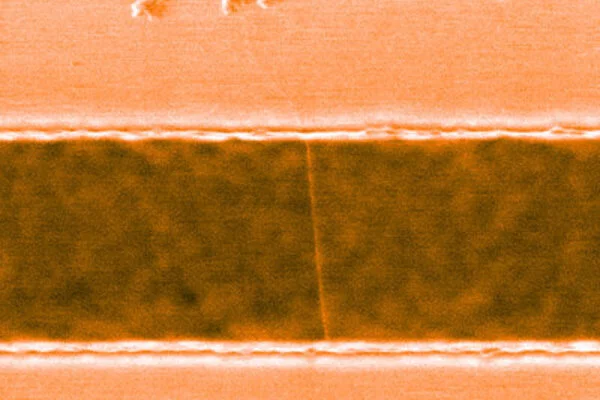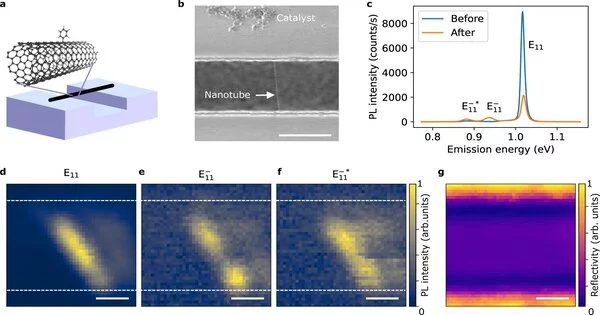Single-photon sources emit light in the form of single particles or photons. They differ from coherent light sources like lasers and thermal light sources like incandescent light bulbs. According to the Heisenberg uncertainty principle, it is impossible to create a state with an exact number of photons of a single frequency. Fock states (or number states) can, however, be studied for a system with an electric field amplitude distributed over a narrow bandwidth. A single-photon source produces an effectively one-photon number state in this context.
RIKEN researchers have created an efficient source of single photons for emerging quantum technologies by adding molecules to carbon nanotubes via a vapor phase reaction.
Quantum technologies, which promise benefits such as secure communication, ultrasensitive sensing, and parallel computing, are on the verge of revolutionizing computing and communications. Many of these applications necessitate the use of light sources capable of producing single photons—the smallest packets of light possible—on demand.
We grew fairly long nanotubes and functionalized them in the vapor phase, so they had no contact with solutions, which contain a lot of impurities. This method allowed us to introduce organic molecules without also incorporating undesirable defects.
Yuichiro Kato
Carbon nanotubes—cylinders of graphene sheets a nanometer or so in diameter that have been endowed with new functions, or functionalized, by the addition of an organic molecule—are a promising source of single photons in the infrared wavelength range used in telecommunications.
The most environmentally friendly approach would be to use carbon nanotubes suspended across an air gap, but this is incompatible with the standard approach of functionalizing carbon nanotubes in solutions. “Carbon nanotubes functionalized in solution tend to be really short and have defects all over them,” says Yuichiro Kato of the RIKEN Center for Advanced Photonics (RAP).
Now, Kato and Daichi Kozawa of RAP, along with their colleagues, have developed a method for functionalizing carbon nanotubes that can be done in the vapor phase, and thus on nanotubes suspended across a trench in a silicon substrate.

“We grew fairly long nanotubes and functionalized them in the vapor phase, so they had no contact with solutions, which contain a lot of impurities,” says Kato. “This method allowed us to introduce organic molecules without also incorporating undesirable defects.”
The study was a collaboration born out of a pre-pandemic interaction at an international conference. Kato and Kozawa’s team at RAP produced the suspended nanotubes and then sent them to chemists in the University of Maryland in the United States for functionalization, who then sent them back for analysis. “YuHuang Wang at the University of Maryland is a great chemist, and he’s the one who got curious about the possibility of doing these reactions in the vapor phase,” says Kato. “It took us a few rounds, but we were able to see good emission from the organic molecules on the nanotubes.”
The team validated the optical performance of their carbon nanotubes by taking spectroscopic measurements on over 2,000 of them. They discovered that the number of organic molecules introduced per nanotube increased with smaller diameter nanotubes, and they were able to model this effect in terms of the greater reactivity of narrower nanotubes.
The study was published in Nature Communications, and the researchers plan to optimize the functionalization process so that only one organic molecule is introduced per nanotube.
















